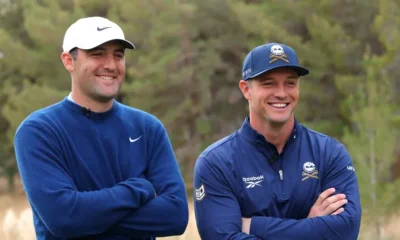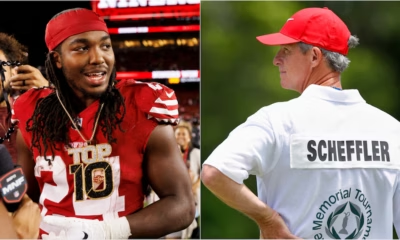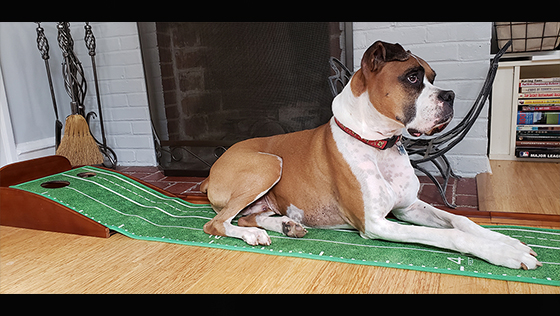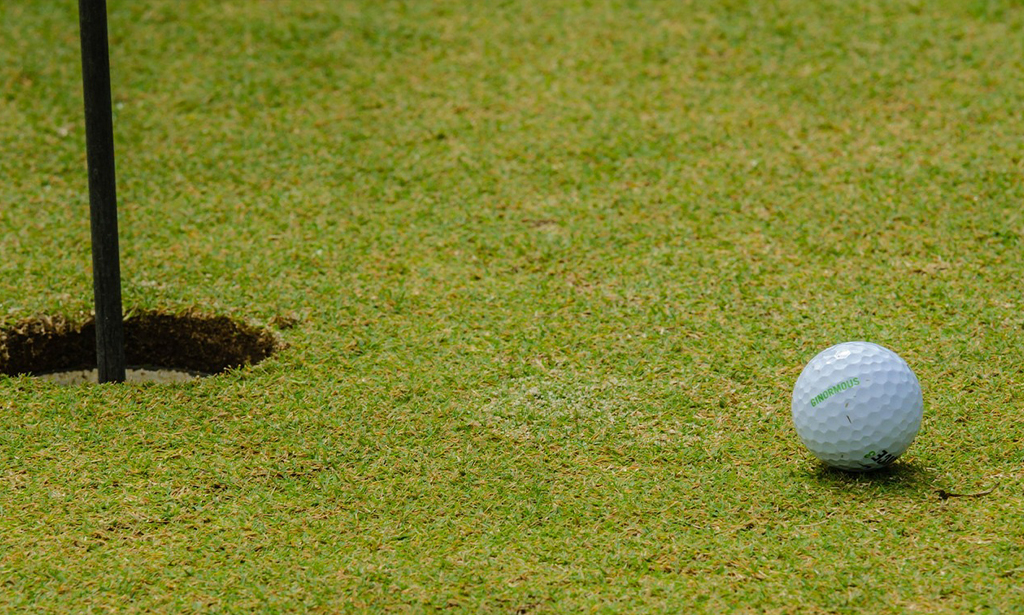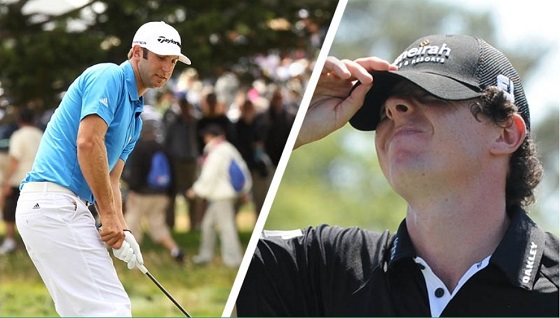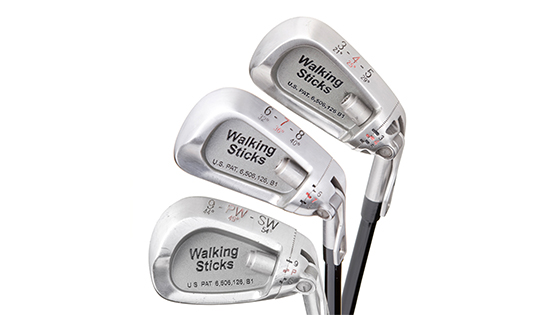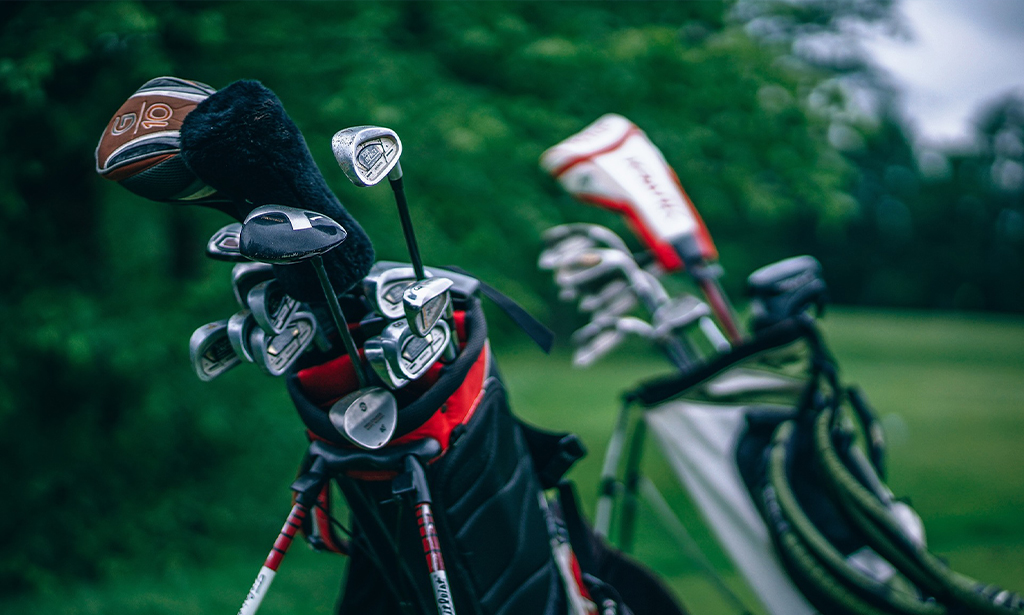Blog
Our Favorite PGA Tour Players to Watch – and Some We’d Skip
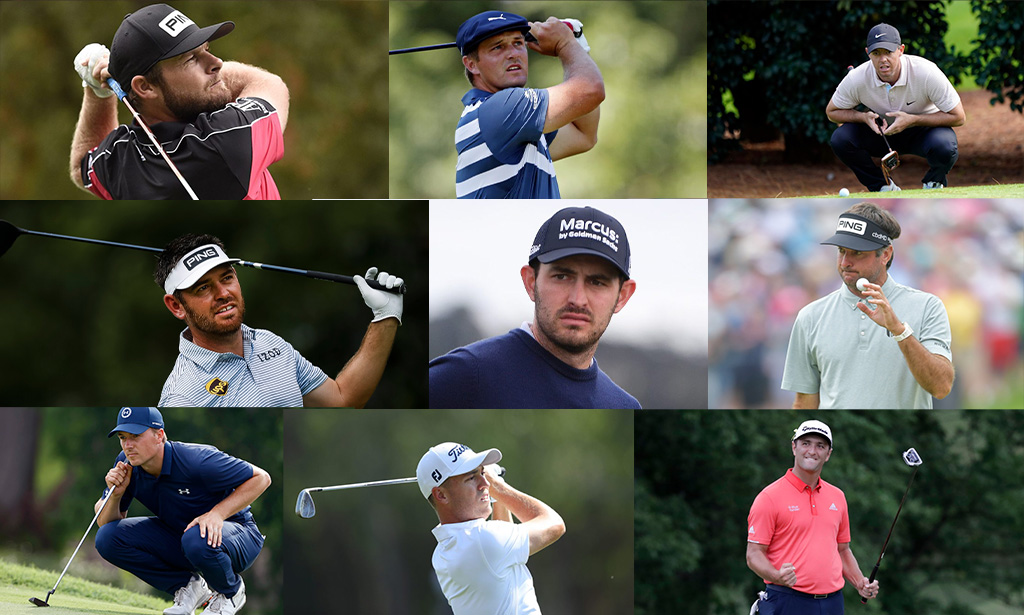
Most PGA Tour events are kind of like a two for one deal. The first two rounds begin on Thursday and golfers must make the cut in order to continue on in the event. This is proceeded by the big weekend excitement that golf fans are sure to be near a television to watch. Plus, that prize money is nothing to turn your nose up at either. This is the pros after all. Top earners are walking away with seven figures, easy.
Of course, all of that big money would not be possible if it weren’t for the network broadcasts. As we’ve especially learned during Covid, televised sporting events hold a lot of value. With even more golf fans tuning in from the comfort of their living room, they are willing to pay for that subscription to be able to tune into the action. The PGA Tour’s relationship with networks is more important than ever. The golfer’s themselves don’t come close to bringing in enough money to even touch the payout that live coverage can provide.
The only pro who could claim that title is Tiger Woods. After his horrific car crash at the beginning of the year, we haven’t seen much of the GOAT. He hasn’t even announced plans to come back any time soon.
Whereas Thursday and Friday’s rounds offer a rapid-fire succession of golf shots to viewers, Saturday and Sunday take on a very different dimension. The focus shifts to those atop the leaderboard. This is where we really get to know the golfers. How their facial expressions tell us a little about what is going on inside their head. The shifts in their body language when they are feeling the pressure. We really get to know their quirks. If a player is doing particularly well, TV cameras will have us invested in on player for well over an hour.
As a disparate audience, we draw conclusions. These are based on our own experiences and despite our lack of professional training. We judge the players based on this persona that we have been deciphering on TV. Because some players are easier to like than others, whether that appeal comes from a swing full of power and grace, an everlasting smile, some crowd interaction or a simple appreciation for one’s intense determination.
As a result, we are able to read the golfer’s thoughts and feelings closer than other professional athletes we analyze from our couch. With some invaluable help from a half-dozen pairs of eyeballs and my own marginal sense of perspective, what follows is an assessment of nine marquee players, each of whom has been assigned a “watchability” rating. Using the Bo Derek scale (10 for best, 1 for worst), our subjects are graded for their on-course deportment and assorted observational factors that add to (or detract from) the viewing experience.
This is not a ranking. Just a subjective look at the men who make the game so interesting.
Rory McIlroy — 9 out of 10

The victory in Vegas last weekend makes Northern Ireland’s finest the perfect leadoff hitter. McIlroy maintains a rapid pace of play that a lot of other golfers on Tour can’t match. He makes some ridiculous course-management decisions at times, but that’s not a negative. When things are going well, he jaunts down the fairway like a 9-year-old kid. When they’re not, he wears it on his face like few others. Sadness, not anger. He is incapable of gloating or showboating. Polite but outspoken. Two steps above gifted but flawed beyond explanation. A wonderful asset to the game and one of the more enjoyable players to watch.
Patrick Cantlay— 6 out of 10

His businesslike approach obviously paid off handsomely in 2021, although I prefer the fiery, fist-pumping version of Cantlay we saw at the Ryder Cup. He is unabashedly slow on the greens, and that shuffle of his feet over a putt can leave a fella feeling seasick, but he holes so many bombs that you feel thankful he won’t need another 90 seconds to knock in the next one.
Jordan Spieth — 5 out of 10

He talks to his golf ball more than he talks to his wife, or anyone else, for that matter. This typically happens as his ball sails off and he sees that it is most certainly not headed in the direction he intended. Tiger Woods has been found guilty of the same crime, but his ball rarely disobeyed his command. Spieth is probably the most verbally animated player on the Tour, which certainly can grate on a viewer’s nerves after a while. That said, his short game alone is reason enough to tune in and enjoy.
Tyrrell Hatton— 8.5 out of 10

When Sergio Garcia gets angry, his behavior is considered petulant, mainly because it is. Hatton’s temperamental outbursts qualify as an amusing form of self-abuse. He becomes so unhappy with himself that he appears ready to quit the game, then makes three consecutive birdies and breaks out the most apologetic grin known to golfkind. If England’s most tenacious grinder ever takes to fatherhood, you can bet your life his kids will behave themselves when daddy’s home.
Happy 30th birthday to the always entertaining @tyrrellhatton. May the mics get hotter as Tyrrell gets older. pic.twitter.com/velVJ40biW— Skratch (@Skratch) October 14, 2021
Bubba Watson — 3 out of 10

You don’t need a degree in psychology to know how Bubba’s day is going. When he’s missing putts, which isn’t all that uncommon, Watson’s dramatic reactions come with a level of authenticity that would have inspired Sir Laurence Olivier. Astonishment. Bewilderment. Injustice. Watson’s collection of grim faces are the stuff of a thousand conspiracies, but the big fella can still shape his ball like nobody’s business. Don’t cry for Bubba. He’ll probably miss one from the same distance on the next hole.
Louis Oosthuizen — 8 out of 10

Beyond owning the smoothest move in every town he visits, the gentle South African has taken his close-but-no-cigar status like a man. And thank goodness, because his career of late has been plagued by a severe stogie shortage. He’ll never be a fan favorite because he doesn’t do cartwheels after making a 15-footer and he doesn’t win tournaments — he’s still 0-for-America — but Oostie is an under appreciated, overlooked commodity from a country that hasn’t exactly been burning up the world stage in recent years. Think of him as the anti-Bubba.
Bryson DeChambeau — 1 on some days, 10 on others

Oh, where do we start? He drives it 380 yards without tearing a pectoral muscle, blames everyone but himself when things go wrong, says some of the dumbest things since Jethro Bodine but still carries himself like the smartest guy in every room he enters. Not for nothing, DeChambeau is also the only active golfer who truly moves the needle—a guy capable of adding 5,000 spectators on any given week or boosting the Tour’s rigid TV ratings. Love him or loathe him, he’s a man of impact. People can’t take their eyes off him.
Justin Thomas— 3 out of 10

Clearly one of the game’s most talented players, Thomas can’t seem to see the forest for the trees. He has won some big tournaments but has taken himself out of others with an allergy to adversity that seems to grow more acute each year. The woe-is-me thing simply doesn’t work at the game’s highest level. He’s a handful and a half when everything’s working, but a lot of bad things happen on a golf course. You deal with them. If JT possessed the inner fight that drives his close buddy Spieth, he’d win six times a year.
Jon Rahm — 9 out of 10

While we’re on the subject of disposition makeovers, let us pay tribute to the year’s most successful competitive lobotomy. Rahm might not have won the U.S. Open if he hadn’t diverted from his hotheaded ways, a change brought on by the birth of his first child and the COVID-19/forced withdrawal that cost him the Memorial, but it’s hard to envision a dude with such a short fuse emerging triumphant at golf’s ultimate battle of attrition. He has always been a big boy physically, but in 2021, Rahm added another 20 pounds of emotional muscle.
He is bright, exceptionally well-spoken and clearly thankful for the opportunity life has given him. Americans have always been hesitant to embrace foreign golfers as one of their own. Rahm is on a brisk pace to become the most popular international player of all-time.
This article originally appeared on SI.com
Blog
Struggling with Focus? Here’s How a Pre-Shot Routine Can Transform Your Golf Game
Struggling to focus on the course? A solid pre-shot routine boosts confidence, sharpens your mind, and leads to better swings and lower scores. Here’s how to build your own.
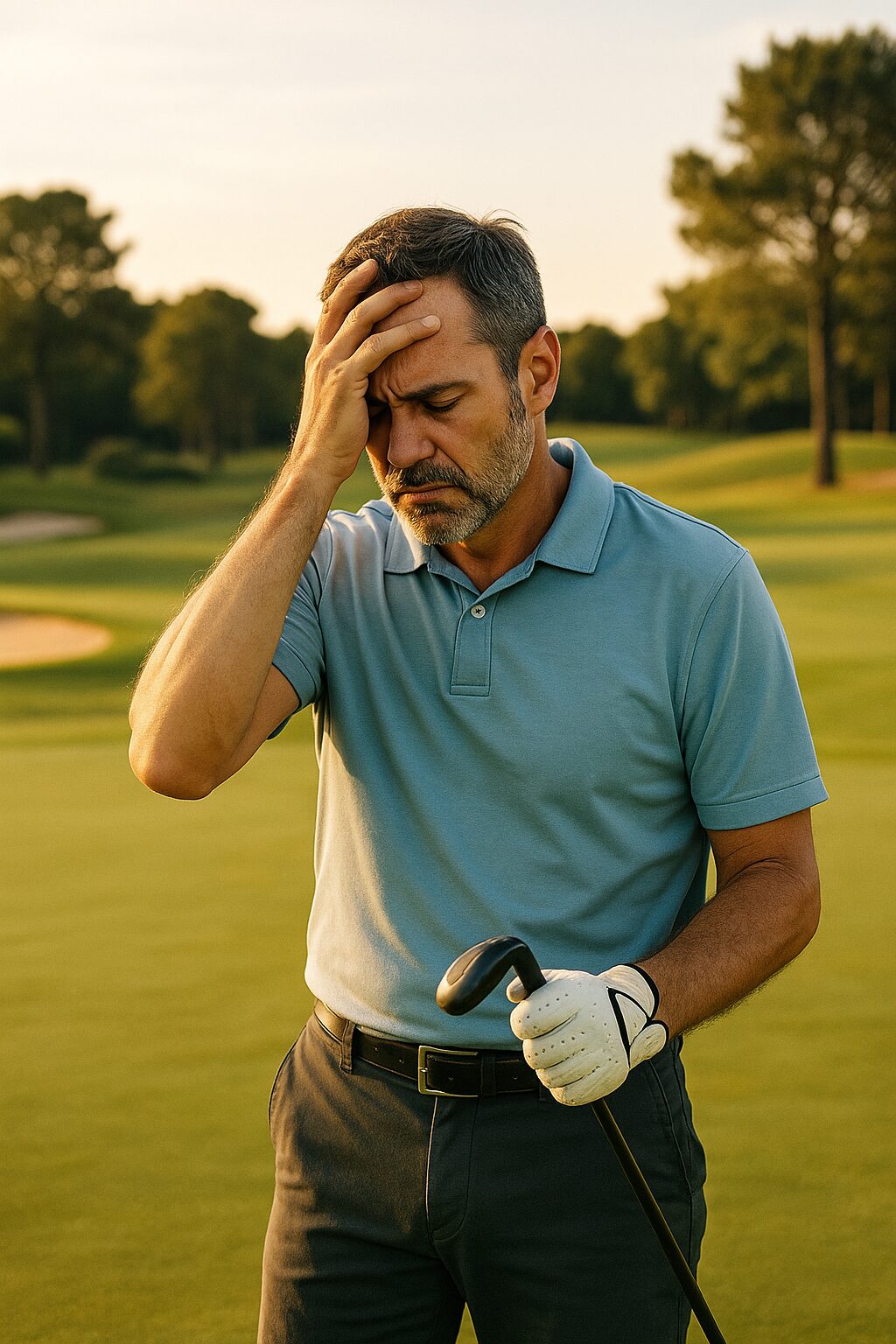
There’s nothing more frustrating than flushing it on the range, only to crumble once you step onto the first tee. If that sounds like you, you’re not alone—and your swing might not be the issue.
More often than not, what’s missing is mental consistency.
The truth is, your brain craves structure, especially when tension is high and pressure builds. That’s where a pre-shot routine comes in—a simple, repeatable sequence that calms your mind, centers your focus, and allows your body to do what it already knows how to do.
Whether you’re lining up a tee shot or facing a tricky downhill chip, a reliable pre-shot routine gives you the confidence and clarity you need to execute.
What Is a Pre-Shot Routine And Why It Matters?
A pre-shot routine is a structured sequence of actions and thoughts you go through before every shot. It’s your mental warm-up.
Think of it like an autopilot system—by triggering familiar steps before each swing, you reduce overthinking and let muscle memory take over.
“The brain doesn’t like surprises. Routines give us the freedom to perform without hesitation.”
— Dr. Bob Rotella, Golf Sports Psychologist
Tour pros swear by it. Watch Rory, Tiger, Nelly Korda—you’ll notice they do almost the exact same thing before every shot. It’s no accident.
A great pre-shot routine:
- Calms nerves
- Builds rhythm
- Improves focus
- Creates consistency under pressure
The 5 Key Steps to a Simple, Effective Pre-Shot Routine
No two routines are exactly alike, but the best ones include these core elements:
1. Pick a Target and Commit
Before anything else—decide what you’re aiming at. Pick a small, specific target (like a tree behind the green, not just “the fairway”).
Then—and this is key—commit to it. No second-guessing. You’ve got one shot. Choose it and trust it.
2. Visualize the Shot
Take a moment to see the shot you want to hit in your mind’s eye. High draw? Low spinner? Picture it from start to finish. This connects your brain and body.
Visualization is a powerful cue to bring your focus away from distractions and into the present.
3. Feel the Swing
Take one or two slow, deliberate practice swings. Match the feel to your intended shot. Don’t just go through the motions—feel the tempo, balance, and rhythm.
This tells your muscles what they’re about to do.
4. Step In with Purpose
This is the physical transition into go-mode. Walk up, align your clubface to the target, set your feet, and glance once more at the target.
At this point, you’re no longer thinking—you’re executing.
5. Pull the Trigger Without Delay
Once you’re set, don’t freeze. Take a breath and go. Overthinking kills more good swings than bad mechanics ever will.
From setup to swing, this part should take 5–10 seconds max.
Common Mistakes to Avoid
- Overcomplicating the routine: Keep it short. 15–20 seconds total is plenty.
- Changing it mid-round: Consistency is the key. Stick with your process—even if you’re struggling.
- Focusing on outcome: Once you’ve committed, let the result go. Focus only on the execution.
Pro Tip – Practice It Like a Skill
Here’s where most amateurs drop the ball: they practice swings, not routines.
Next time you hit the range, practice your full routine on every shot. Visualize, commit, breathe, swing. You’ll not only groove your motion—you’ll make your process automatic.
Build One That Fits You
Here’s a simple example you can adapt:
- Pick your target
- Visualize the ball flight
- Take 1 practice swing
- Step in, align clubface, set feet
- Glance at target
- Breathe and swing
It should feel natural, not robotic. Once it does, you’ve got something you can rely on in the clutch.
The difference between a great shot and a chunked one often happens before the club ever moves. With a consistent pre-shot routine, you’ll play with more confidence, stay focused under pressure, and hit more solid shots—even when nerves kick in.
Want to play better golf without overhauling your swing? Start with your routine.
And when you’re ready for more real-world, no-BS golf tips that make you better—come back to ClickItGolf.com.
@clickitgolfofficial Struggling with focus on the golf course? Discover how a simple pre-shot routine can transform your game, boost your confidence, and improve your consistency. Learn the key steps to developing your own routine and take your golf to the next level! #GolfTips #PreShotRoutine #GolfImprovement #MentalGame #GolfConsistency #ClickitGolf #GolfAdvice #GolfPerformance ♬ original sound – Clickit Golf
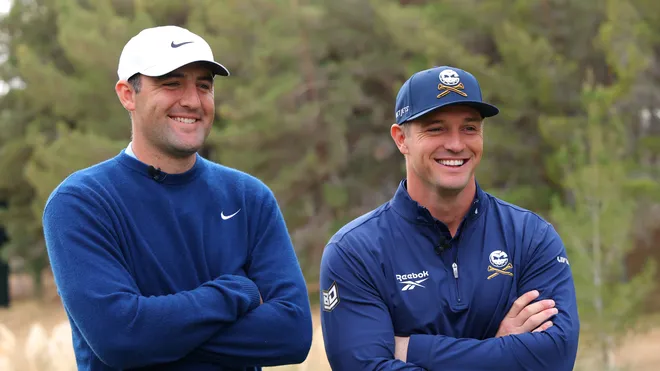
In the ever-evolving world of professional golf, few rivalries capture the contrast of style and substance like Scottie Scheffler versus Bryson DeChambeau. While both have claimed massive wins and global headlines, their paths to success and how they play the game couldn’t be more different. Here’s a deep dive into their strengths, weaknesses, career highlights, and what makes each stand out in today’s competitive landscape.
Backgrounds and Styles
Scottie Scheffler
The Dallas-born Scheffler embodies a classic, workmanlike approach to golf. Known for his calm demeanor, efficient swing, and remarkable consistency, Scheffler has risen to the top of the world rankings with little flash but elite-level substance. His game is built on balance, precision, and one of the most reliable tee-to-green performances the sport has seen in years.
Bryson DeChambeau
Nicknamed “The Scientist,” DeChambeau has taken an analytical and experimental approach to the game. He’s redefined physical fitness in golf, adding serious bulk to increase driving distance. Known for using single-length irons and obsessing over launch angles and biomechanics, Bryson is a true disruptor. His aggressive style polarizes fans and analysts, but it undeniably commands attention.
Strengths
Scheffler
- Tee-to-Green Excellence: Leads the PGA Tour in strokes gained tee-to-green.
- Consistency: Rarely misses cuts and often finishes in the top 10.
- Short Game: Exceptional touch and creativity around the greens.
- Mental Game: Composed under pressure; rarely rattled.
DeChambeau
- Driving Distance: One of the longest hitters in the game; regularly over 320 yards.
- Innovation: Willing to take unconventional approaches for marginal gains.
- Power Play: Dominates par 5s and shortens long courses with his length.
- Confidence: Self-belief and boldness to attempt shots most won’t.
Weaknesses
Scheffler
- Putting: Historically his weakest stat, though he’s shown improvement.
- Media Presence: More reserved; lacks the big personality that moves the needle for fans and brands.
DeChambeau
- Inconsistency: Can be volatile—either dominating or struggling.
- Course Management: Aggressiveness sometimes leads to trouble.
- Injury Risk: His physical transformation has come with some health setbacks.
Biggest Wins
Scottie Scheffler
- The Masters (2022)
- The Players Championship (2023)
- Multiple WGC and Signature Events
As of 2025, Scheffler has claimed over 10 PGA Tour titles and continues to rack up top finishes in majors and elite events.
Bryson DeChambeau
- U.S. Open (2020)
- Arnold Palmer Invitational (2021)
- Multiple LIV Golf Wins
DeChambeau made headlines by joining LIV Golf, where he’s claimed multiple high-stakes victories, including a team championship and a dominant individual LIV win in 2023.
Career Earnings
Scheffler:
Over $50 million in PGA Tour earnings alone, with additional income from endorsements like Nike, TaylorMade, and Rolex.
DeChambeau:
Estimated $60–$80 million, largely boosted by a reported $100+ million LIV Golf contract and additional prize money. His endorsements have shifted due to his controversial LIV move, but he remains a marketable figure.
Similarities
Both are U.S.-born and played collegiate golf (Scheffler at Texas, DeChambeau at SMU).
Each has reached the top 10 in the Official World Golf Ranking.
Both have won majors and represented the U.S. in Ryder Cups.
Each has shown a willingness to be different—Scheffler through quiet dominance, DeChambeau through outspoken innovation.
Key Differences
| Trait | Scottie Scheffler | Bryson DeChambeau |
|---|---|---|
| Playing Style | Traditional, consistent | Aggressive, experimental |
| Physical Transformation | Minimal | Extreme (bulk and strength) |
| Equipment | Standard setup | Single-length irons |
| Public Persona | Reserved, grounded | Outspoken, controversial |
| Tour Affiliation | PGA Tour loyalist | LIV Golf convert |
Final Thoughts
Scheffler and DeChambeau represent two archetypes in modern golf: one a quiet technician, the other a showman scientist. Whether you admire Scottie’s stoic efficiency or Bryson’s radical reinvention, both are changing the game in their own way. And in a sport where individuality meets performance, there’s room—and demand—for both.
Blog
Why Proper Club Fitting Is the Real Game Changer

If you’ve ever walked off the 18th green thinking, “It’s not me, it’s the clubs,” well… you might be half right.
As a PGA Professional who’s watched thousands of swings—from scratch players to first-timers—I can tell you that one of the most overlooked keys to better golf is proper club fitting. Not just buying shiny new sticks off the rack, but taking the time to find clubs that are tailored to your swing.
You don’t need a Tour card to get Tour-level precision. Let’s talk about why club fitting matters, what it changes, and how it can truly transform your game from the tee box to the final putt.
The Myth of “Good Enough”
“I’m not good enough to be fit for clubs.”
That’s the most common thing I hear—and it’s completely backwards.
High-handicap golfers have even more to gain from club fitting than low-handicappers. Why? Because the equipment can help you fix ball flight, optimize distance, reduce mis-hits, and build confidence—all without having to reinvent your swing.
Off-the-rack clubs are designed to fit “average” specs. But no two golfers are the same. Length, lie angle, shaft flex, grip size—these all play a massive role in how the club interacts with your body and the ground.
What Happens in a Proper Club Fitting?
At its core, a fitting session is about matching the equipment to your natural swing—not forcing you to swing a certain way to fit the gear.
Here’s what a proper club fitting includes:
1. Interview & Swing Assessment
A certified fitter (or PGA pro like myself) will ask about your current set, ball flight tendencies, common misses, and goals. Then we’ll watch you hit some shots to get a baseline.
2. Launch Monitor Data
Using tools like TrackMan or Foresight, we’ll capture numbers like:
- Ball speed
- Launch angle
- Spin rate
- Club path and face angle
- Carry distance and dispersion
These numbers don’t lie—and they tell us what to tweak.
3. Testing Head & Shaft Combinations
You’ll hit several combinations of club heads and shafts to find what gives you the best performance. One degree of loft or a different shaft flex can make a huge difference.
4. Dialing In Lie Angle & Length
Lie angle affects directional control—too upright, and you might pull shots left; too flat, and you’ll miss right. Club length affects control, consistency, and strike location.
5. Grip Size & Feel
Don’t underestimate this. A grip that’s too thick or too thin can alter your grip pressure and release pattern.
Real Results—Backed by Data
One of my students recently went through a full iron fitting. He was using clubs he bought off the rack 10 years ago. His miss was a push-fade, and he struggled with distance control.
After 90 minutes, a combination of slightly shorter shafts, softer flex, and two degrees more upright lie changed everything. His dispersion tightened by 40%, and he gained an average of 12 yards per club. More importantly—his confidence skyrocketed.
And it wasn’t just him. Across the board, golfers who get fitted:
- Gain more consistent contact
- Reduce directional misses
- Improve distance gapping
- Hit more greens in regulation
- Score better, without changing their swing
The Mental Game Boost
Here’s a secret: it’s not just about numbers. Fitted clubs give you confidence. When you know the tool in your hand is built for you, you swing freer, commit more fully, and stop second-guessing every shot.
Confidence leads to better swings. Better swings lead to better results. It’s a cycle—and it starts with the right equipment.
What About Cost?
Yes, a proper fitting might cost $75–$150 depending on where you go. And yes, custom-fit clubs may be slightly more than what you’d pay at a big box store.
But if you’re already spending time and money on golf, wouldn’t you want to get the most out of it?
A one-time investment in fitting can save you years of frustration—and possibly hundreds spent chasing fixes that won’t work with ill-fitting clubs.
Look—I’ve given thousands of lessons in my career, and nothing changes a golfer’s outlook faster than finally swinging clubs that work with them, not against them.
Whether you’re a 5 handicap trying to fine-tune yardages or a 25 handicap tired of slicing your driver, a proper club fitting can absolutely be a game changer.
You don’t need a new swing—you just need the right tools.
So before you spend another dollar on swing gadgets or tip videos, find your local PGA professional or certified fitter and book a session. Your game (and your sanity) will thank you.
Want more ways to play better without starting over?
Visit ClickItGolf.com every week for practical golf improvement tips, equipment reviews, betting insights, and advice from golfers who live the game every day.
-

 Product Review6 years ago
Product Review6 years agoThe Perfect Practice Putting Mat Review by Jason Tenzer
-

 Blog4 years ago
Blog4 years agoLoophole Rule Offers PGA Tour Pros a Mulligan
-

 Blog4 years ago
Blog4 years ago2021 Buyer’s Guide: The Top 10 Value Golf Balls For Distance & Feel
-

 Blog4 years ago
Blog4 years agoGolf Marriage Counselor
-

 Blog6 years ago
Blog6 years ago9 Biggest Chokes Of The Past Decade
-

 Product Review6 years ago
Product Review6 years agoTHE ADJUSTABLE IRONS: WALKING STICKS GOLF CLUBS
-

 Blog4 years ago
Blog4 years agoWhat Your Golf Clubs Say About You
-

 Equipment6 years ago
Equipment6 years agoOHK Sports Interview by Jason Tenzer


